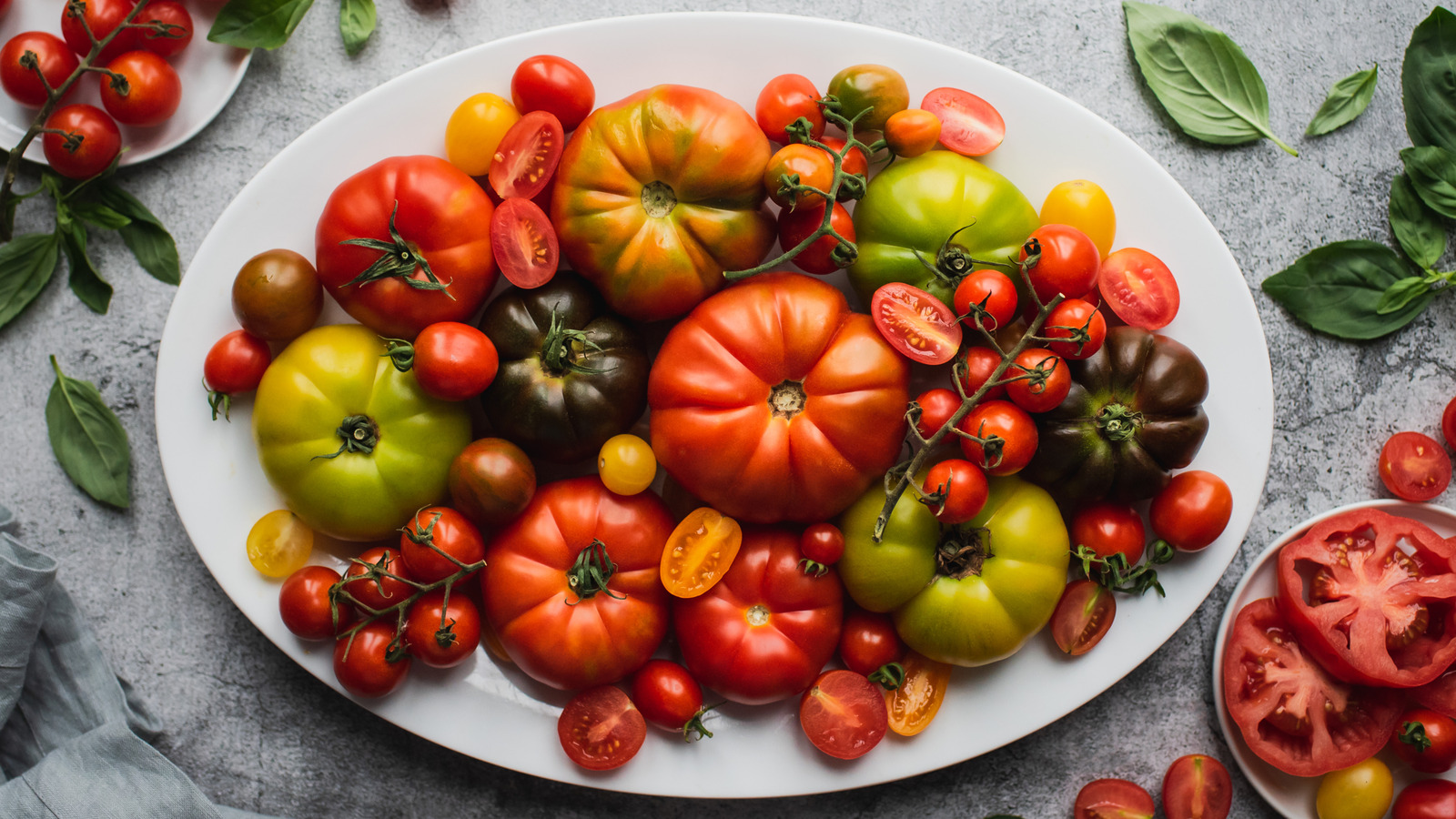Versatile tomatoes are the stars of many recipes, but there are so many different tomato varieties in all kinds of colors other than bright red, that you might wonder what the different hues mean in terms of flavor. These joyful fruits can thank the organic pigment lycopene for their red, pink, yellow, orange, or green color. But it’s the sugar and acidity in a tomato that primarily influence its flavor, along with varying levels of amino acids and vitamin C, among other elements. So how does color tell us about the flavor then? Well, higher concentrations of lycopene in brighter, more vibrantly colored tomatoes are associated with more robust flavors. This is partly because the color tends to deepen as the tomato ripens. We have an article about how to choose a ripe tomato which may also prove useful. So in deep red tomatoes you’ll find volumes of flavor from a good balance of acidity and sweetness which bring that signature tomatoey flavor to your taste buds. Look out for crimson cherry and crimson plum tomatoes, as well as sungold and sweet aperitif tomatoes for a deep and balanced flavor.
Pink tomatoes are similar to red, but have less lycopene in them, hence their lighter color. They have lower acidity, allowing the sugars a little more prominence. That’s what gives these blush-colored tomatoes a lovely sweetness and makes them milder in flavor compared to red tomatoes.
Moving from pink to white (while they’re called white, they’re more a light yellow or pale green in color), these are the tomatoes that are ideal for palates that don’t do well with the normal acidity of tomatoes. They have very low acidity and are super mild in flavor with a delicate almost fruity nuance to them.
The dark side of tomatoes is the most flavorful
Jumping to darker-colored tomatoes, purple, brown, and black varieties are chock-full of flavor, have a high acid content, and a more complex taste. Deep blue-black colors indicate that the fruits contain anthocyanins, which standard tomatoes don’t produce. As well as boasting antioxidant benefits, the anthocyanin pigments give these moody-looking tomatoes their signature rich colors. These dark fruits offer a sweet earthy flavor, along with hints of savory, and even saltiness, with a richness that makes them truly wonderful.
Also vibrant in color are yellow and orange tomatoes. The color gives away that these tomatoes tend to have a citrusy flavor, even a hint of lemon, but with a medium to low acidity. As the colors get more orange and yellow tones, you’ll often find the sweetness increase, bringing an almost candy-like fruity sweetness. This is also found in striped tomatoes, which have low acidity and high sugar. The stripes are formed by genes that can cause the tomato’s skin to keep concentrations of chlorophyll in certain areas, giving the two-tone appearance.
Chlorophyll is also what keeps the green color in green tomatoes. They have low lycopene, so don’t develop the bright reds, oranges and yellows of other tomatoes, but retain their chlorophyll content into the fully ripe stage. The result is that these tomatoes have a wonderful tangy and bright flavor with a fairly high acid content. Not too dissimilar in taste to less-sweet red tomato varieties, they can also have a sweet hint with a fullness and richness in flavor.






